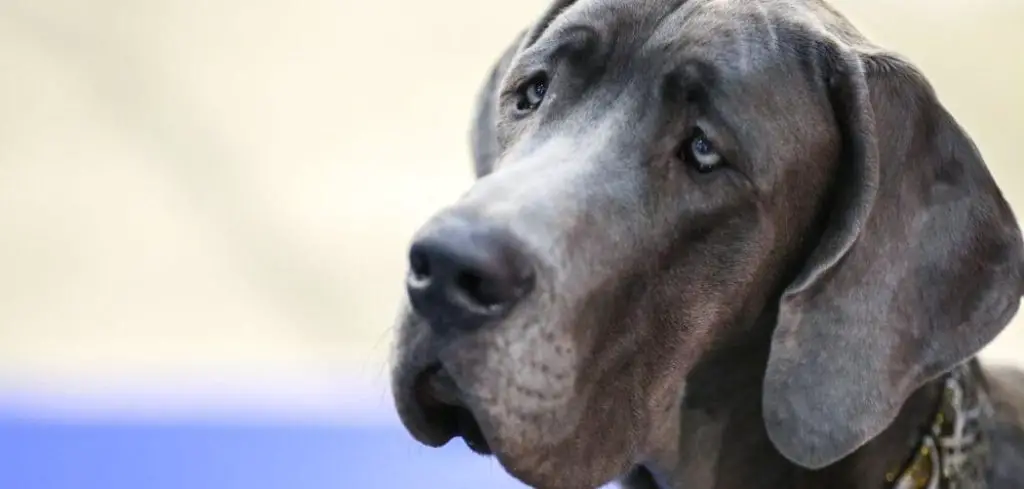It’s alarming to see your dog drooling excessively and making repetitive chomping motions. These symptoms may seem minor on their own, but together, they can signal discomfort or even neurological issues.
We outline the common reasons for a dog drooling and chomping, what you can do at home, and when to seek veterinary help.
Dog Drooling and Chomping — Why It Happens
When dogs drool and chomp simultaneously, it often points to oral discomfort, nausea, or neurological triggers. Common causes include dental disease, seizures, ingestion of irritating substances, nausea from an upset stomach, or even a stuck foreign object in the mouth.
Some dogs may also exhibit this behavior due to stress or compulsive habits. While not every case is an emergency, persistent symptoms always deserve closer attention.

Dog Drooling and Chomping: Common Causes
Dental Disease
One of the most frequent causes is dental disease, including gingivitis, abscesses, or broken teeth.
Pain in the mouth can cause excessive drooling as saliva builds up in response to irritation. Chomping may occur as your dog attempts to relieve the discomfort or dislodge food or debris.
You might also notice bad breath, pawing at the mouth, or reluctance to eat. If left untreated, dental issues can lead to systemic infections and chronic pain.
Read more: Dog Drooling and Confused Teeth (What it means)
Nausea or Gastrointestinal Upset
Nausea doesn’t always lead to vomiting. For many dogs, it causes excessive salivation and rhythmic jaw movements.
Common culprits include motion sickness, dietary indiscretion (like eating spoiled food), or GI diseases such as pancreatitis.
Other symptoms to look for include lip licking, grass eating, pacing, or hiding. Nausea-related chomping often comes and goes but shouldn’t be ignored if it becomes frequent.
Seizure Activity or Focal Seizures
Dogs experiencing focal seizures may exhibit unusual oral behaviors like chomping, teeth grinding, or snapping at invisible objects.
These seizures affect only a small area of the brain and may not include full-body convulsions. Excessive drooling often accompanies the episode.
Some dogs appear disoriented before or after the event. Seizure-related behaviors need veterinary evaluation and possibly neurological imaging.
Foreign Object in the Mouth
A piece of wood, a sharp grass awn, or even a small toy fragment can become lodged in your dog’s mouth.
In response, your dog might drool heavily and repeatedly chomp in an effort to remove it. They may also rub their face on the floor or resist being touched around the muzzle.
Foreign objects can quickly cause infection or injury to the soft tissues and should be removed promptly.
Oral Ulcers or Chemical Irritation
Drooling and chomping may also occur if your dog has come into contact with a chemical irritant like a household cleaner, plant sap, or insecticide.
These substances can cause painful burns or ulcers in the mouth. Your dog may react by frothing, gagging, or rapidly opening and closing their jaw.
This is a medical emergency, especially if you notice signs of oral burns, facial swelling, or behavior changes.
Compulsive Behavior or Anxiety
Some dogs develop compulsive behaviors involving mouth movements, especially in response to stress, boredom, or past trauma.
These repetitive motions may mimic chomping or teeth grinding and are often accompanied by drooling due to continuous mouth motion.
While not dangerous in the short term, compulsive behaviors can interfere with quality of life and may require behavioral therapy or medication.
What to Do If Your Dog Is Drooling and Chomping
If this behavior comes on suddenly, stay calm and observe your dog closely. Check their mouth gently for signs of swelling, cuts, or stuck objects—but only if your dog allows it safely.
Remove access to any potential toxins or irritants, including household plants or cleaning agents. Offer clean water, but don’t force food until symptoms subside.
If your dog appears nauseous, you can withhold food for a few hours while monitoring their energy and behavior. For stress-related episodes, provide a quiet and reassuring environment.
Keep notes on when the symptoms occur and how long they last. This information will be valuable if a vet visit becomes necessary.
When to Call or Visit Your Vet
Seek veterinary help immediately if:
The drooling and chomping persist longer than 30–60 minutes
You notice bleeding, swelling, or a stuck object in the mouth
Your dog shows signs of a seizure or disorientation
There’s vomiting, diarrhea, or other systemic symptoms
You suspect your dog ingested a toxic substance
Chronic or recurring episodes also warrant evaluation, as they may indicate underlying neurological or gastrointestinal conditions. Early diagnosis can prevent more serious complications down the line.
Read more: Dog Drooling and Foaming at Mouth (Here’s why)
Key Takeaway
Seeing your dog drooling and chomping can be unsettling, but understanding the possible causes can help you take swift and effective action.
Whether it’s dental discomfort, nausea, or something more serious, staying observant and contacting your vet when needed ensures your dog gets the care they deserve.
With timely attention, many causes of drooling and chomping can be treated successfully—bringing relief to both you and your furry friend.
